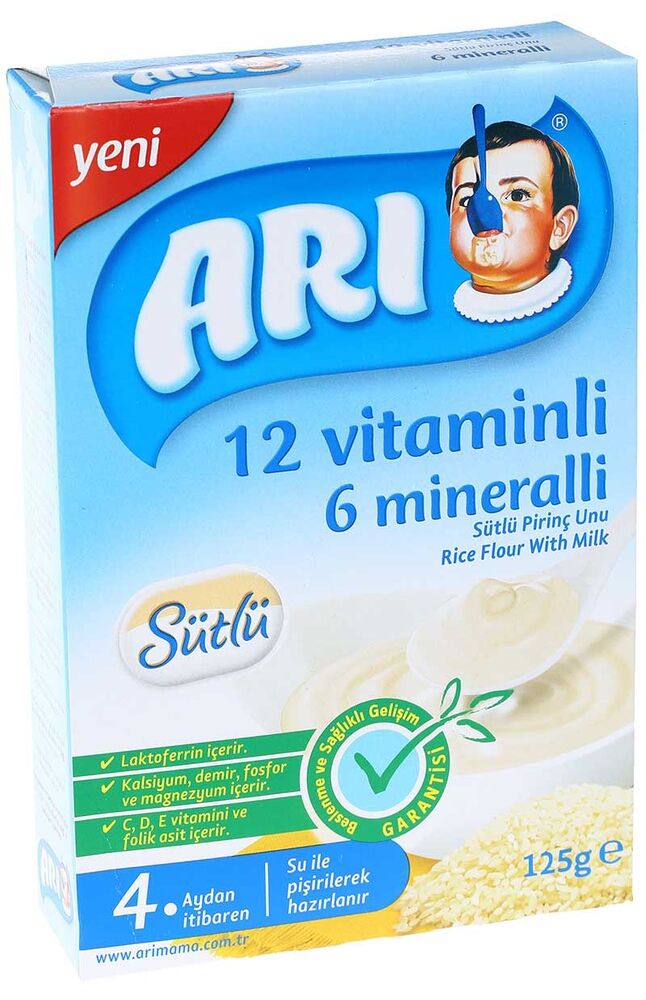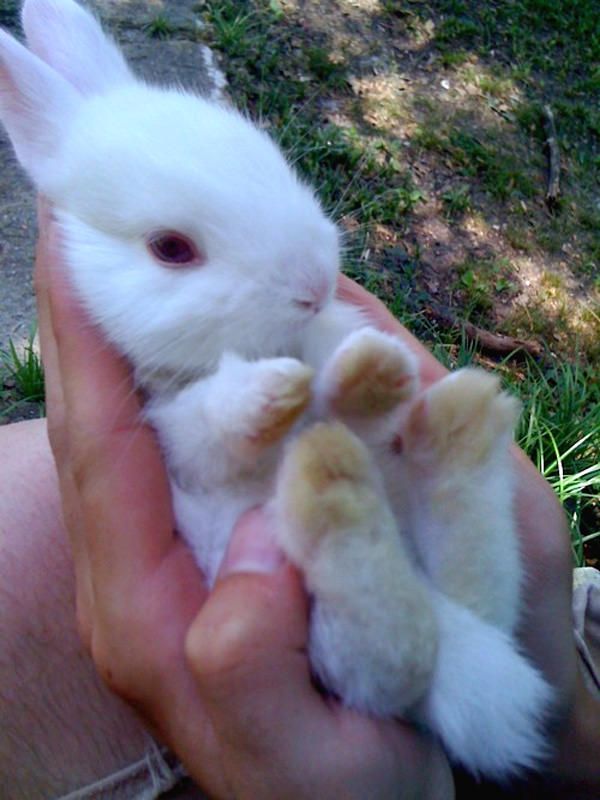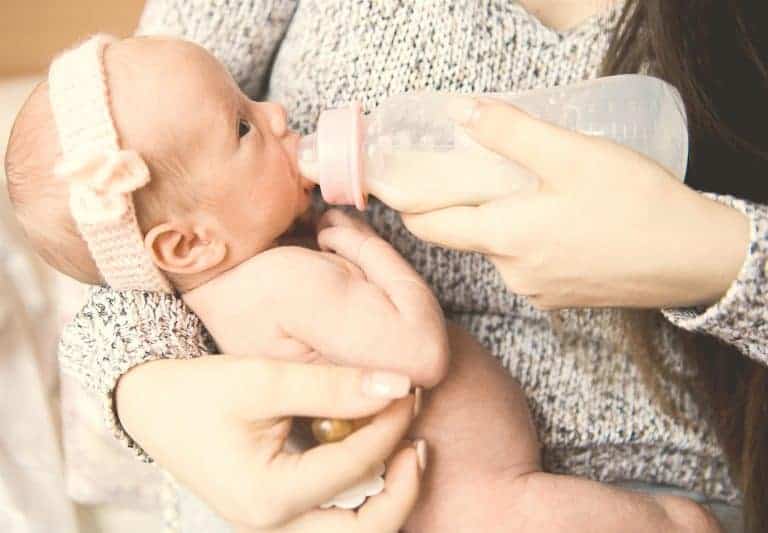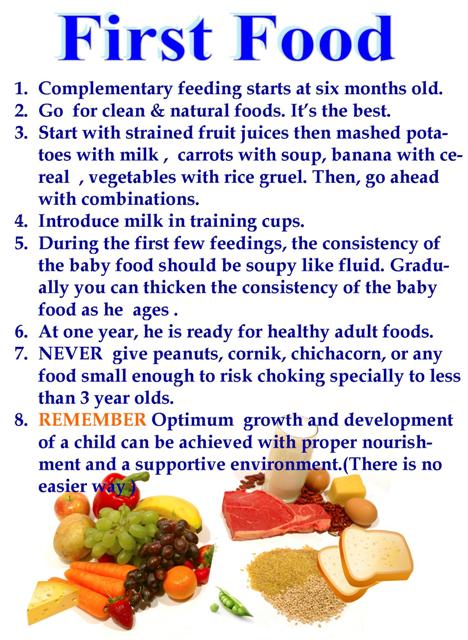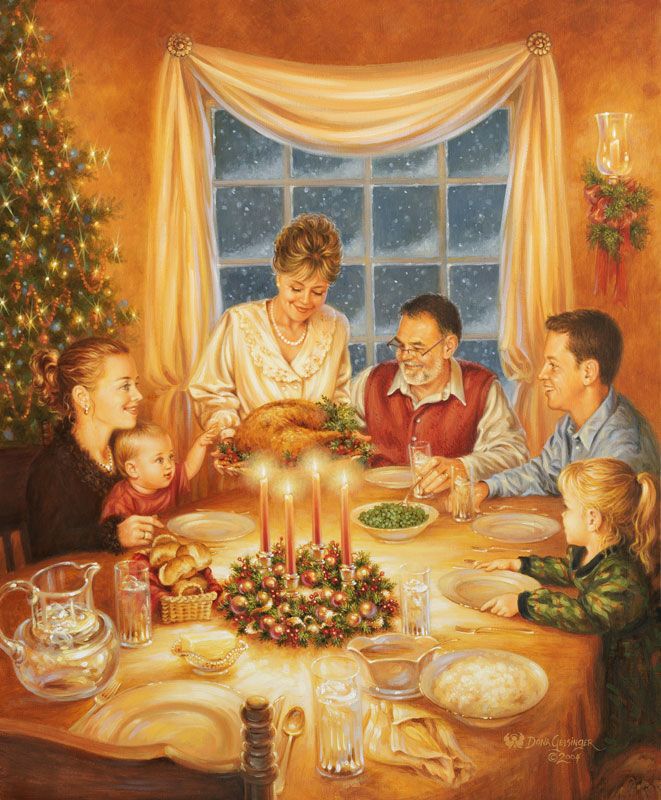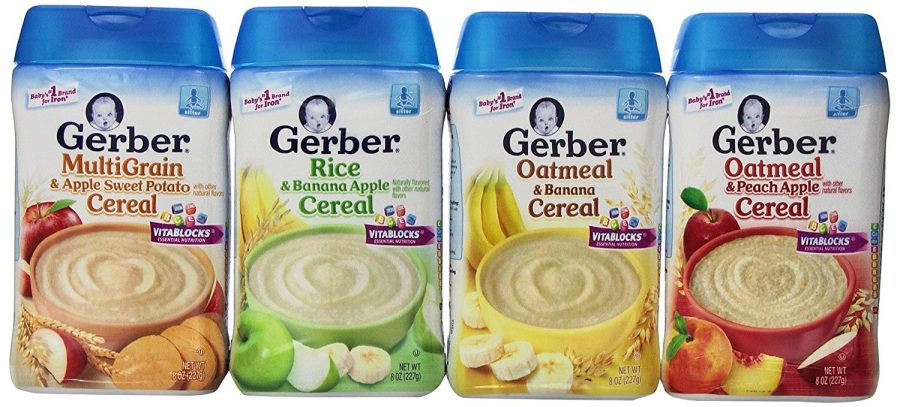Rice flour for baby food
How to make baby rice cereal at home (porridge for babies)
By Swasthi on August 2, 2022, Comments, Jump to Recipe
Baby rice cereal recipe and rice porridge for babies – This homemade baby rice cereal is one of the best first foods for babies. It turns out delicious, creamy and smooth as good as the ready made baby cereals and you may stop buying any more after you try this. This cereal can be used not only for babies but also for toddlers up to 3 years during diarrhea, fever or teething.
This baby cereal is suitable as a first food for 6 months old baby. For babies younger than 6 months, i suggest consulting your pediatrician. You can check this food chart for 6 months old baby and this one for above 7 months old.
Rice is a highly recommended first grain for babies since it is easy to digest, non allergic and the smooth texture it yields. The ready made cereals are precooked, dehydrated and then processed. During this process many nutrients are lost – this is one of the reasons why ready made baby cereals are enriched with more nutrients.
Using this recipe, you can make brown rice and white rice cereal separately. Initially use white rice for about a week and then start brown rice by mixing both in equal quantities.
After the baby completes 6 months, dal/lentils can also be prepared the same way. The ratio of rice: dal should be 3:1 for the first week. If the baby is doing good without any colic, then the proportion can be increased to 2:1. If using brown rice , the ratio can be 2:1:1 white rice:brown rice: dal. You can also add few drops of ghee if using dal to make the baby cereal. To introduce ghee and the for quantity to try with, you can check this post on best foods for weight gain in babies.
I suggest using aged organic rice and dal. I have tried using basmathi, ponni, sona masuri, thai hom mali rice for my kids. Hom mali yields a very fragrant baby cereal and its taste is much superior than any other varieties.
Benefits of this dry cereal
1. Not much time is taken to prepare a baby’s meal. If this powder is ready, making baby’s food is a breeze. Since the ingredients are already soaked and roasted they get cooked fast. Just stir it in water and cook. Not much planning is needed.
2. The texture of the cereal is more like the ready made baby cereal – smooth, delicious, tasty, not expensive and more healthy than the ready made cereals.
3. Make one base cereal but can add so many flavors to this. Fruit purees, mashed veggies, milk or leafy greens can also be added.
How to make baby rice cereal at home step by step photos
1. Wash brown, white rice and dal separately until the water runs clear. Soak them in lot of water for about 6 hours. Do not cover the pot, leave them in a well ventilated place, like near a window. This process of soaking rice or dal breaks down the hard to digest components in the foods for easy digestion. This also helps to prevent colic. However if you feel you cannot do the entire process, you may just skip the soaking part. Rinse them well and drain the water.
However if you feel you cannot do the entire process, you may just skip the soaking part. Rinse them well and drain the water.
2. Drain off completely in a colander. Spread them on a clean white cloth, preferable white or undyed cloth. Leave it to air dry or fan dry for 30 to 50 minutes.
3. Dry roast them on a medium flame for 5 minutes and then on a low flame. After a while, rice begins to pop and splutter. The grains turn out very light so the cereal is gentle on the tummy. Switch off and cool.
4. Similarly follow the same process for white rice and dal.
5. When cooled powder them finely and store in a air tight jar. If your blender cannot process well, sieve the flour. Powder the coarse grains again.
Rice porridge recipe for babies
To prepare baby food, always use a heavy bottom steel pot. Do not use aluminium or non stick pans. To prepare the cereal, mix 1 tbsp flour with 1/2 cup water and cook on a low flame constantly stirring to prevent burning. Foods cooked on a low flame yield the best texture and taste. 1:6 ratio of flour:water works well to bring it to the right consistency. You may need to add more water since that depends on the kind of rice. When the cereal cools down, add formula milk or breast milk to enhance the nutrition. For babies above 6 months, moong dal can be used. I suggest not to add milk to dal, instead ghee can be added.
Foods cooked on a low flame yield the best texture and taste. 1:6 ratio of flour:water works well to bring it to the right consistency. You may need to add more water since that depends on the kind of rice. When the cereal cools down, add formula milk or breast milk to enhance the nutrition. For babies above 6 months, moong dal can be used. I suggest not to add milk to dal, instead ghee can be added.
Based on the baby’s tummy conditions, you can combine them and use. Prefer only white rice cereal with milk when the baby has more colic. During stomach upset or teething, this powder can be used to make a rice porridge or kanji. This powder can be used for light dinner as well after 7 months.
Any fruit puree or mashed veggies like potato or sweet potato can also be added to the rice cereal instead of milk. Since fruits and milk do not go well together, i suggest not to serve both in one meal.
There are so many ways this dry baby rice cereal can be put to use. I will update more ideas on this post shortly.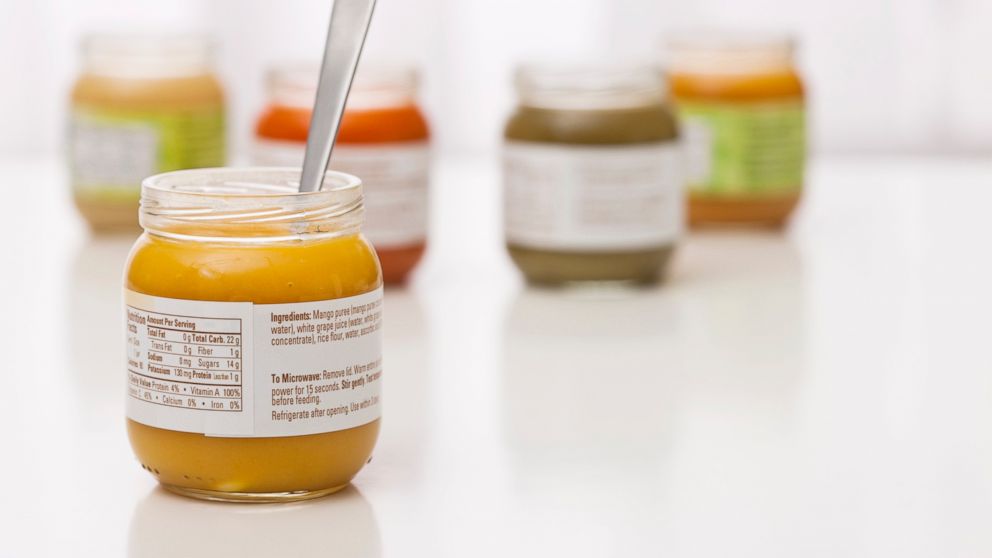
Here are the notes on baby rice cereal that may be useful:
1. I used aged brown basmathi rice and ponni rice, since i made this for the blog post and not for a baby in real. If making for baby i highly recommend using organic rice and dal.
2. I have used 1:6 proportion of brown rice:water to cook the cereal. It may vary depending on the stove flame, quality of rice, brand of rice and whether it is brown or white rice. You will have to adjust the quantity of water as needed especially if making very less quantity.
3. This dry cereal keeps good if refrigerated for more than an year and if frozen for longer.
Prep Time6 minutes
Cook Time30 minutes
Total Time36 minutes
Servings1 cup
AuthorSwasthi
- ▢ 1 cup rice (prefer organic)
- ▢ Water to wash the rice
Alternative quantities provided in the recipe card are for 1x only, original recipe.
For best results follow my detailed step-by-step photo instructions and tips above the recipe card.
Nutrition Facts
How to make baby rice cereal at home (porridge for babies)
Amount Per Serving
Calories 675 Calories from Fat 9
% Daily Value*
Fat 1g2%
Sodium 9mg0%
Potassium 212mg6%
Carbohydrates 147g49%
Fiber 2g8%
Protein 13g26%
Calcium 52mg5%
Iron 1.5mg8%
* Percent Daily Values are based on a 2000 calorie diet.
Tried this recipe?Mention @SwasthisRecipes or tag #swasthisrecipes!
© Swasthi’s Recipes
About Swasthi
I’m Swasthi Shreekanth, the recipe developer, food photographer & food writer behind Swasthi’s Recipes. My aim is to help you cook great Indian food with my time-tested recipes. After 2 decades of experience in practical Indian cooking I started this blog to help people cook better & more often at home. Whether you are a novice or an experienced cook I am sure Swasthi’s Recipes will assist you to enhance your cooking skills.
My aim is to help you cook great Indian food with my time-tested recipes. After 2 decades of experience in practical Indian cooking I started this blog to help people cook better & more often at home. Whether you are a novice or an experienced cook I am sure Swasthi’s Recipes will assist you to enhance your cooking skills.
Follow Swasthi’s Recipes
Sign up to receive awesome Swasthi’s Recipes in your inbox *
Popular Recipes
Featured Recipes
Healthy Homemade Baby Food with Rice Flour
- HOME
- Recipe
- main
- Healthy Homemade Baby Food with Rice Flour
main
Healthy Homemade Baby Food with Rice Flour
Rice flour is an ideal and convenient ingredient for homemade baby food.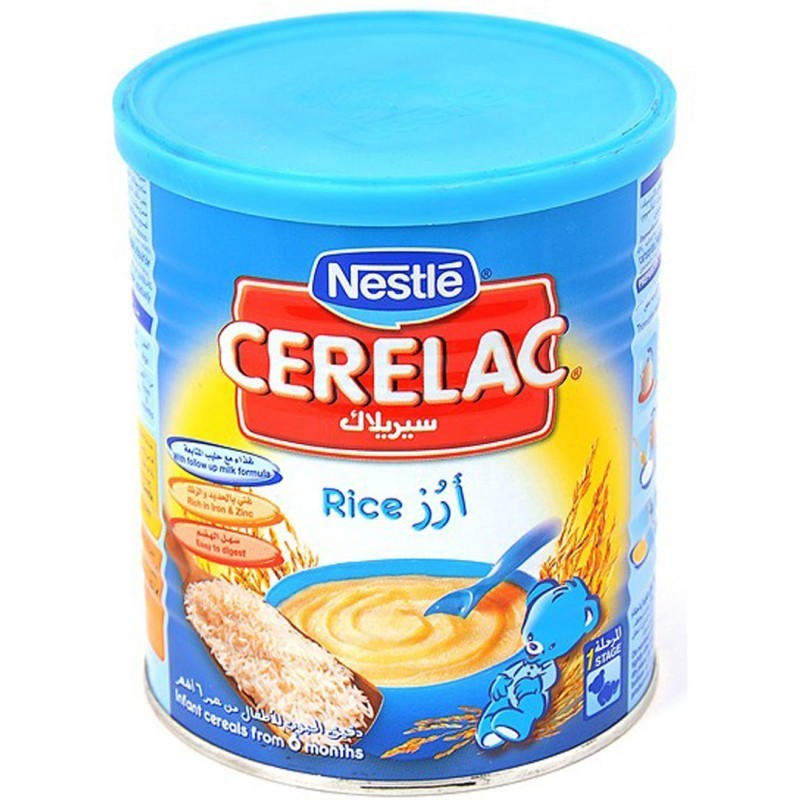 This recipe introduces three dishes for babies and toddlers – porridge, creamy spinach with white fish, and colorful vegetable gnocchi – all done with fresh ingredients. Choose the recipe that suits the developmental stage of the child.
This recipe introduces three dishes for babies and toddlers – porridge, creamy spinach with white fish, and colorful vegetable gnocchi – all done with fresh ingredients. Choose the recipe that suits the developmental stage of the child.
Tips:
-
It is very easy to thicken the sauce with rice flour. Once heated, the sauce does not separate over time.
-
Roasted soy powder can be purchased online or at Asian grocery stores. Alternatively, roasted sesame, almond powder, or cinnamon also work well.
-
All rice flour is naturally gluten-free. Make this dish completely gluten-free by using gluten-free substitutes for other ingredients as needed.
Yield:
-
Ingredients
For the porridge
| 1 tablespoon (9g) | rice flour |
|---|---|
| 3-5 tablespoons (45-75ml) | water |
|---|---|
| Soy powder or ground sesame for garnish (see Tips) | |
For the gnocchi
| ½ (100g) | onion (about ½ cup) |
|---|---|
| ½ (100g) | potato (about ½ cup) |
|---|---|
| 1 (100g) | carrot (about ½ cup) |
|---|---|
3. 5oz/100g 5oz/100g | kabocha pumpkin or canned pumpkin puree (about ½ cup) |
|---|---|
| 1 cup (135g) | rice flour |
|---|---|
For the creamy spinach with white fish
| 2oz/50g | white fish |
|---|---|
| 0.25oz/7g | fresh spinach (about ¼ cup) |
|---|---|
| Rice flour for dusting fish | |
| 1 teaspoon(3g) | rice flour for mixing with water |
|---|---|
| ½ cup (100ml) | water |
|---|---|
Directions
For the porridge
In a small saucepan over low heat, combine rice flour and water.
 Whisk gently, and turn off the heat when the liquid becomes translucent. Serve in a bowl with a sprinkle of soy powder or ground sesame on top (see Tips).
Whisk gently, and turn off the heat when the liquid becomes translucent. Serve in a bowl with a sprinkle of soy powder or ground sesame on top (see Tips).For the vegetable gnocchi
Coarsely chop onions, potatoes, carrots, and pumpkin. Put them in a pot of water and bring just under a boil. Once cooked, save a cup of cooking liquid for mixing later. Discard the onions. Mash each vegetable separately and set aside.
For the potato gnocchi, combine the mashed potato with 3 1/2 tablespoons of rice flour and some liquid from cooking the vegetables. Mix mashed carrots with 1/3 cup rice flour for the carrot gnocchi, and the mashed pumpkin with 1/3 cup rice flour for the pumpkin gnocchi. Knead each gnocchi separately until reaching the softness of the earlobe. Add the liquid from cooking the vegetables to make it soft.
Boil water in a pot. Take a small amount of the dough, about the size of a little finger.
 Curl it, then flatten it slightly. Repeat for all three flavored gnocchi doughs. Boil them. When they start to float, transfer them to a bowl of water, and drain.
Curl it, then flatten it slightly. Repeat for all three flavored gnocchi doughs. Boil them. When they start to float, transfer them to a bowl of water, and drain. For the creamy white fish with spinach
Dust white fish with rice flour, and cook in a boiled water. When cooked, drain and mash the fish into small pieces.
Boil the spinach in hot water, drain, and finely chop them. Combine with the fish.
Add water and rice flour into a small pot over medium-heat. When boiling, add the fish mixture and simmer until creamy. When cool enough, serve.
Note
- This recipe uses US customary units. Measurement equivalents include: 1 teaspoon = 5ml, 1 tablespoon = 15ml, and 1 US cup = 237ml or 8fl oz. (1 metric cup = 250ml or 8.5fl oz.)
- The cooking time using microwave oven in this recipe is based on 1,000W in the US.
- The temperature and baking time may be different depending on the oven used.
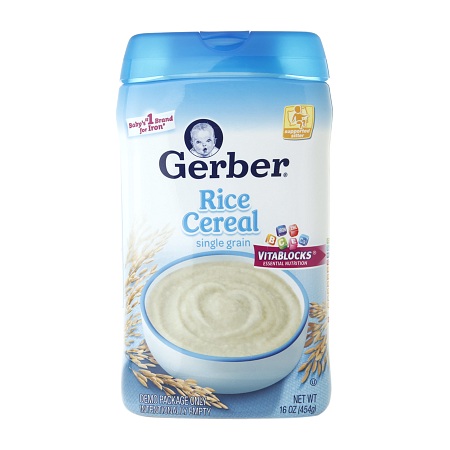 Please adjust accordingly.
Please adjust accordingly. - All rice flour is naturally gluten-free. Make this dish completely gluten-free by using gluten-free substitutes for other ingredients as needed.
Rice flour in baby food
Rice flour is a safe additive that makes fruit and vegetable purees thicker and meat purees fluffier. The hypoallergenicity of the additive allows us to consider it universal.
Contents
- What is the difference between complementary foods and complementary foods
- Why supplements are needed
- Rice flour – arguments for and against
- Which is better, starch or rice flour
- Can manufacturers be trusted
What is the difference between supplementary feeding
- The child is supplemented if there is not enough mother's milk.
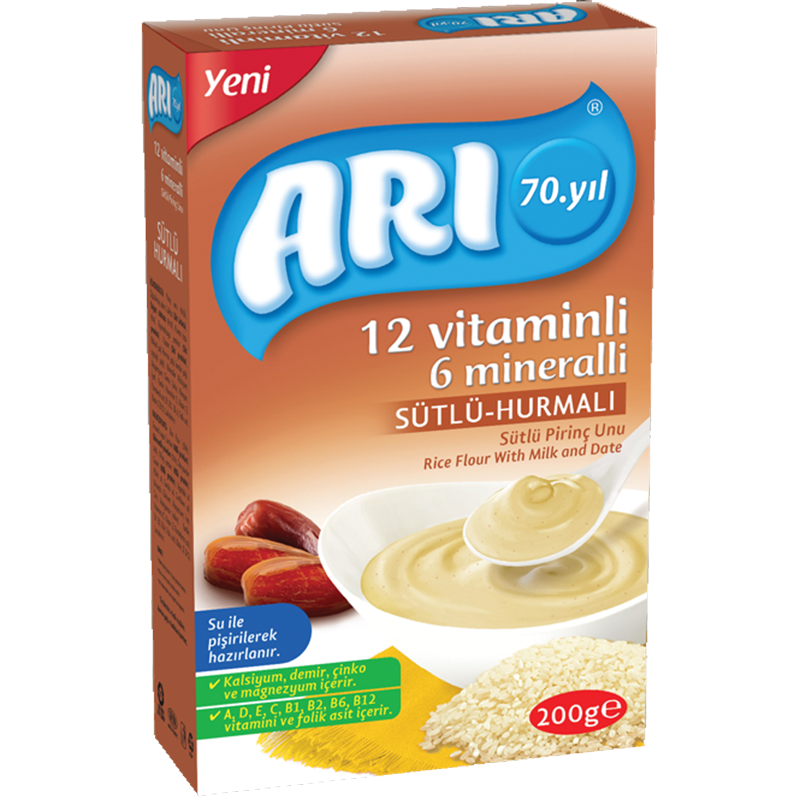 Supplementary food is milk formula, cow or goat milk.
Supplementary food is milk formula, cow or goat milk. - Complementary foods complement the usual diet in the first months of life, that is, it is added to milk or mixtures. So the baby is prepared for adult nutrition. nine0008
A human baby cannot feed on milk alone for a long time, but it is desirable to continue breastfeeding longer.
Grandmothers, neighbors, friends and other experienced professionals persistently advise young mothers to start complementary foods with baby purees, egg yolks, juices almost at the age of two months. Parents who refuse to feed their child are considered insolvent, lazy and even greedy.
The myth that the baby needs additional vitamins and minerals originated in the days when missing mother's milk was replaced with cow's milk. Then the milk had to be boiled, and at the same time, indeed, most of the vitamins and other useful substances were destroyed. Children without breastfeeding did not put on weight well, lagged behind in development, and even suffered from rickets. To prevent this, mashed potatoes, yolks and fish oil were added to the food. nine0003
To prevent this, mashed potatoes, yolks and fish oil were added to the food. nine0003
If a breastfeeding woman is fully nourished or if high-quality milk formula is used, a child does not need to be fed up to six months.
When it is no longer possible to saturate a growing baby with milk alone, it is time for complementary foods. It has been noticed that children eat ready-made purees from cans with great pleasure, but for some reason they refuse homemade delights. We cannot unravel this mystery, so let's accept this state of affairs. Rice flour is often included in baby formulas, and this is a concern for parents who seek to limit supplements. nine0003
ads
Why supplements are needed
Manufacturers add starch or rice flour to baby food not only to save on vegetables, fruits or meat. Fruit or vegetable puree without thickener will be too thin, and meat puree, on the contrary, will be coarse. Rice flour gives food a pleasant density.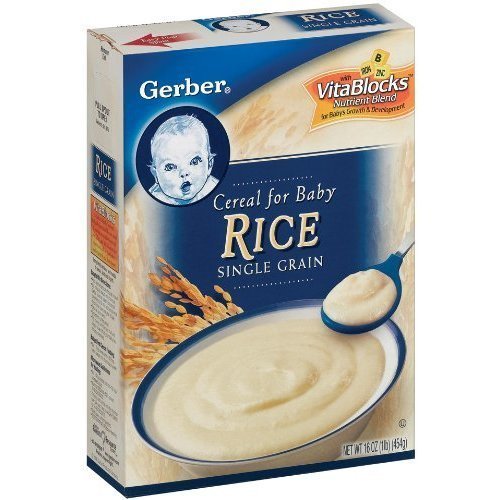
- Try to feed your baby fruit puree - it will drip off the spoon and most of it will end up on the bib. Now remember how you cook meat pate for adults. In addition to butter, you add flour, ground biscuits or bread to it to make the structure lighter. They also prepare food for kids - everything should be tasty, beautiful and healthy. nine0008
- Fruit puree with harmless additives that cover the digestive tract with a protective film, will not allow acid to irritate the mucous membrane. The baby will not suffer from heartburn after you feed him pear or apple puree.
- Apricot and apple food causes stomach pains, diarrhoea, colic and gas in children. Fructose is to blame, to which the child's body has not yet adapted. Rice flour promotes the breakdown of sugars, and the baby will absorb all the useful things that are in fruits without complications. nine0008
- Additives thicken milk formulas and cereals for easier feeding.

Rice flour - arguments for and against
Only milled rice flour is added to children's meals - powdery, white, odorless and tasteless. Rice flour is completely free of gluten (gluten) and is 80% starch.
100 grams of flour:
- almost 6 grams of proteins;
- 1.4 grams fat;
- 80 grams of carbohydrates; nine0008
There are also B vitamins, tocopherol and niacin, a small amount of trace elements.
Benefits
- It is rice flour that is used as an additive, not wheat or other flour, since it, with an abundance of vegetable protein necessary for the formation of muscle tissue, does not cause allergies and does not change the taste of the main product.
- The fat content is low, so the child can be obese.
- A complete set of amino acids is necessary for the development of the child. nine0008
- The absence of gluten, which causes flatulence and indigestion even in adults, makes the rice flour supplement universal.

- With diarrhea, rice flour helps to normalize the stool, removes bloating.
Rice flour does not cause allergies, so baby food with this additive is suitable for almost all children.
Harmful
Rice flour can be harmful under certain conditions. To prevent unexpected reactions, feed your baby plain fruit puree first and gradually add rice flour. Observe the reaction and draw conclusions. nine0003
- In large quantities, rice flour strengthens the intestines, but in good baby food, the content of this component is small.
- Rice flour contains substances that break down sugars. A large amount of sugar in the blood can lead to excessive motor activity of the baby, whims and excitability. A rash on the skin is not ruled out.
Which is better, starch or rice flour
Additives are found in almost any baby food. Instead of rice flour, manufacturers can use corn, potato, or flax starch. According to pediatricians, supplements are completely harmless if the baby does not suffer from a specific disease. In such cases, a doctor develops a special diet. nine0003
In such cases, a doctor develops a special diet. nine0003
Starch in baby food performs the same function as rice flour, but it lacks many of the nutrients.
Can manufacturers be trusted? Parents are suspicious of this statement, trusting more the experience of previous generations.
Let's admit the obvious:
- Baby food from good manufacturers is balanced in terms of vitamins, microelements and useful substances. nine0008
- At home, it is extremely difficult to achieve the perfect puree consistency.
- Canned food is salt and sugar free.
- Control at the manufacturing plant excludes the use of questionable raw materials.
- By buying canned food for your child, you can diversify his diet and save your own time.
Carefully choose food for your baby, pay attention not only to the expiration date, but also to the condition of the package. There should not be any damage on the jar, clear figures for the date of manufacture and expiration date, the middle of the lid is slightly depressed.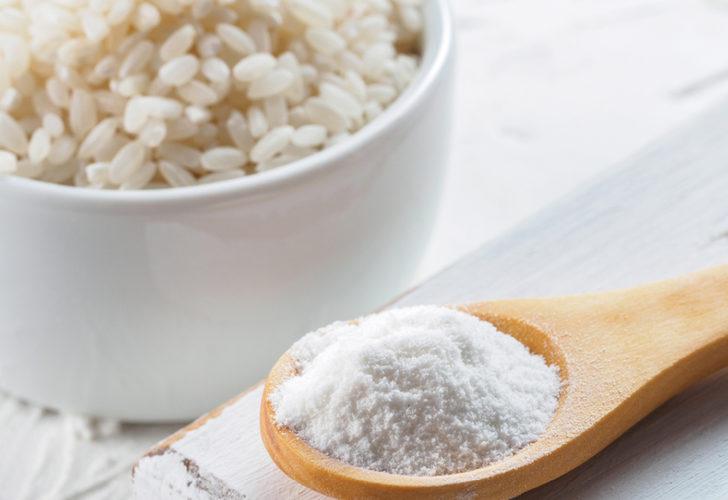 Read the label - it indicates the age of the child for whom the product is suitable. nine0003
Read the label - it indicates the age of the child for whom the product is suitable. nine0003
The use of preservatives is prohibited in the production of baby food, and long-term storage is ensured by vacuum packaging and modern processing technologies. The only acceptable "preservative" - vitamin C - can not harm, as well as the addition of rice flour in baby food.
Foods new to the child should be included in the diet very carefully, with a few spoons or sips. You can not give the baby unfamiliar food if he is sick or has to be vaccinated. Do not insist if the child does not like something that, from your point of view, is very tasty and healthy. nine0003
Rice flour in a child's diet. Let's weigh all the facts ~
- Baby nutrition
Undoubtedly, nature has taken great care of the little man and his nutrition, which is why breast milk is the most healthy and tasty for him. But by 6 months, the baby, in addition to mother's milk, needs additional vitamins and trace elements to maintain normal physical and intellectual development.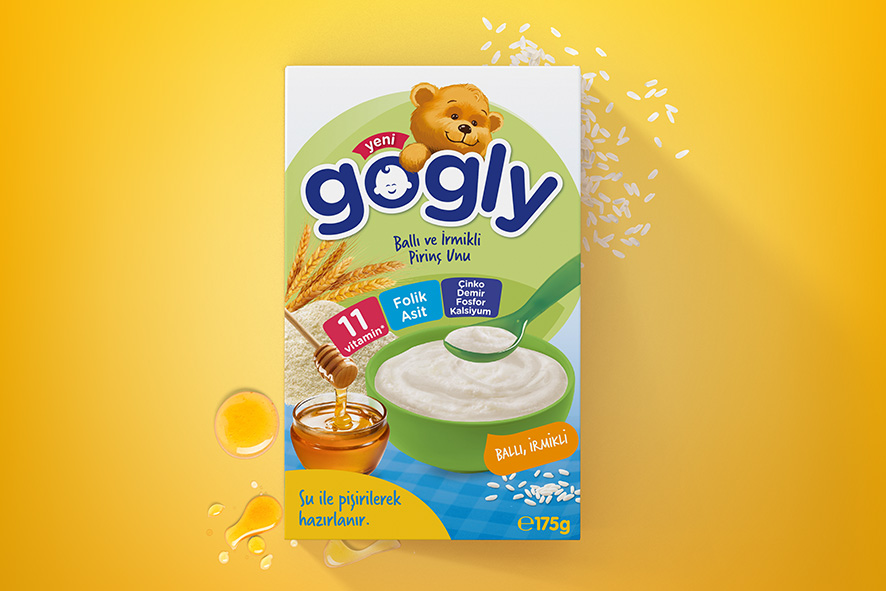
Pediatricians around the world advise starting complementary foods with gluten-free foods. nine0003
Rice flour for baby food is absolutely safe in this sense - it does not contain gluten or gluten and is 80 percent starch.
100 g flour contains
- approximately 6 g of protein;
- 1.4 g fat;
- 80 g carbohydrates
- plus B vitamins, trace minerals, niacin and tocopherol.
Benefits of rice flour for baby
As a baby food, pediatricians recommend starting complementary foods with rice flour products, as in this production they use polished rice flour, which has a powdery texture, without any flavor, except for all these qualities, it does not cause allergies, which is very important for a baby who has just started weaning.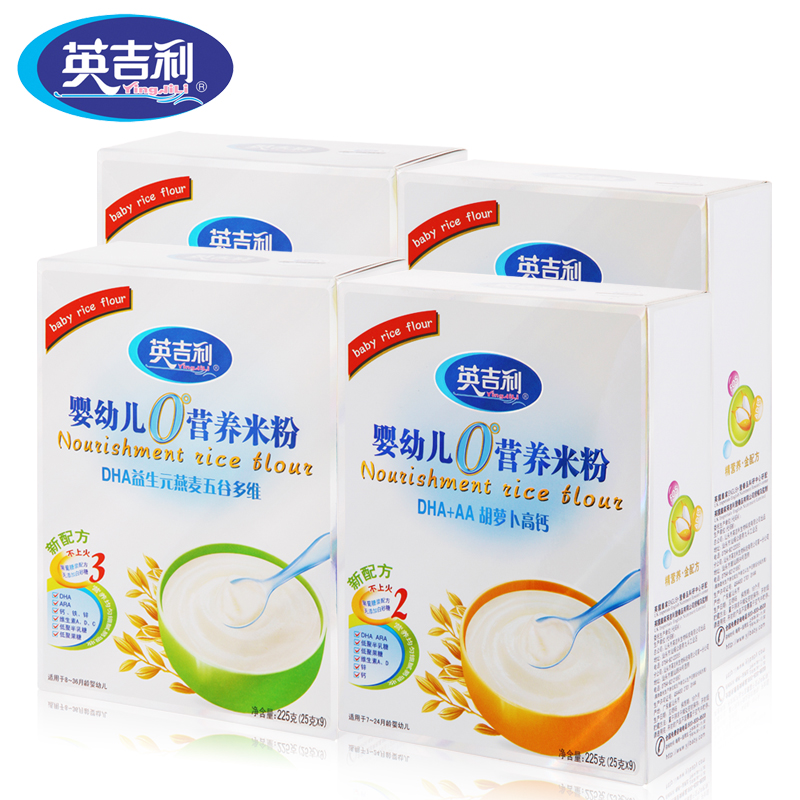
Let's note several qualities, what distinguishes rice flour and what its benefits are.
- The presence of a large amount of vegetable protein in the composition , which is considered the main source of the formation of strong muscle tissue, which is very important for the normal physical development of the baby;
- Does not cause obesity in a child , since the amount of fat in the composition is minimal;
- Gluten-free composition , which is very important for the normal functioning of the child's gastrointestinal tract;
- Positive positive effect on diarrhea .

Is rice flour harmful?
Like any product, rice flour for baby food has not only its positive effect on the human body, but also a negative effect. Rice flour should be added to the baby's diet gradually, one or two tablespoons with fruit purees and monitor the body's reaction, if everything is fine, there are no stomach or intestinal disorders, then you can increase the mass.
So, cons of rice flour :
- In small quantities, rice flour is safe for a child, but in large quantities it can strengthen the intestines
- The consistency of rice flour contains components that break down sugar , which can lead to mood swings, whims and hyperactivity in the child, skin rashes may appear.
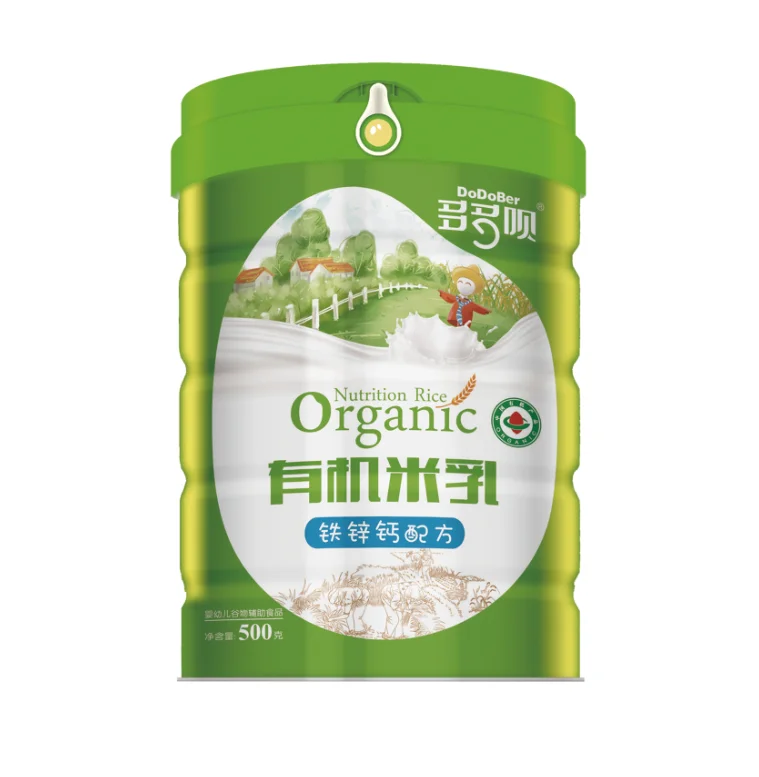
Which is better rice flour or starch? nine0021
Almost all manufacturers of baby food use additives, for example, instead of rice flour they use corn or potato starch , which is of course harmless if the baby does not have such diseases in which the use of starch is prohibited, or if the baby does not have individual intolerance.
By their properties starch and rice flour for children perform the same function , but compared to rice flour, starch does not have many useful properties. nine0003
Many parents are suspicious of industrial baby food and trust more food that they prepare themselves, but unlike them, experts around the world say that baby food in jars is the most suitable option for the stable development of the crumbs.
- At home it is difficult to observe the heat treatment , which will preserve all the useful vitamins and microelements contained in this product;
- Extremely it is rarely possible to achieve the desired consistency ;
- Commercial baby food does not use salt or sugar ;
- Food manufacturers use only selected products to make purees or other mixtures;
- Industrial baby food will help diversify the baby's diet and save time for parents;
Parents should be very careful in introducing complementary foods into the child's diet, doing it gradually, one spoon at a time, and watching the reaction of the body.